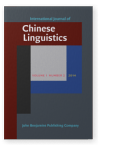Vol. 1:2 (2014) ► pp.275–292
Humorous communication in social and political issues
A case study of a Celebrity Imitation Show
Humor is a common and effective rhetoric strategy for conveying ideas. This paper examines scripts from Celebrity Imitation Show, a Taiwanese TV program, and investigates characteristics of humorous expressions via the Asymmetry Approach (Viana 2010). More specifically, we examined: (1) how humorous expressions are identified through humor criteria in the show; and, (2) how ridicule is integrated into humorous expressions to convey criticism toward political or social issues. Results indicate that asymmetrical attributes exist in humorous expressions, in which sarcasm and nonsense in the foreground script ridicule the targets in the background script. In this manner, linguistic absurdity attracts the audience by adding linguistic diversity to humorous expressions. Furthermore, shifting targets between two scripts is another strategy to satirize incidents. In sum, the asymmetrical attributes in scripts produce humor, while ironic effects can be elicited from counterfactual assumptions within.
